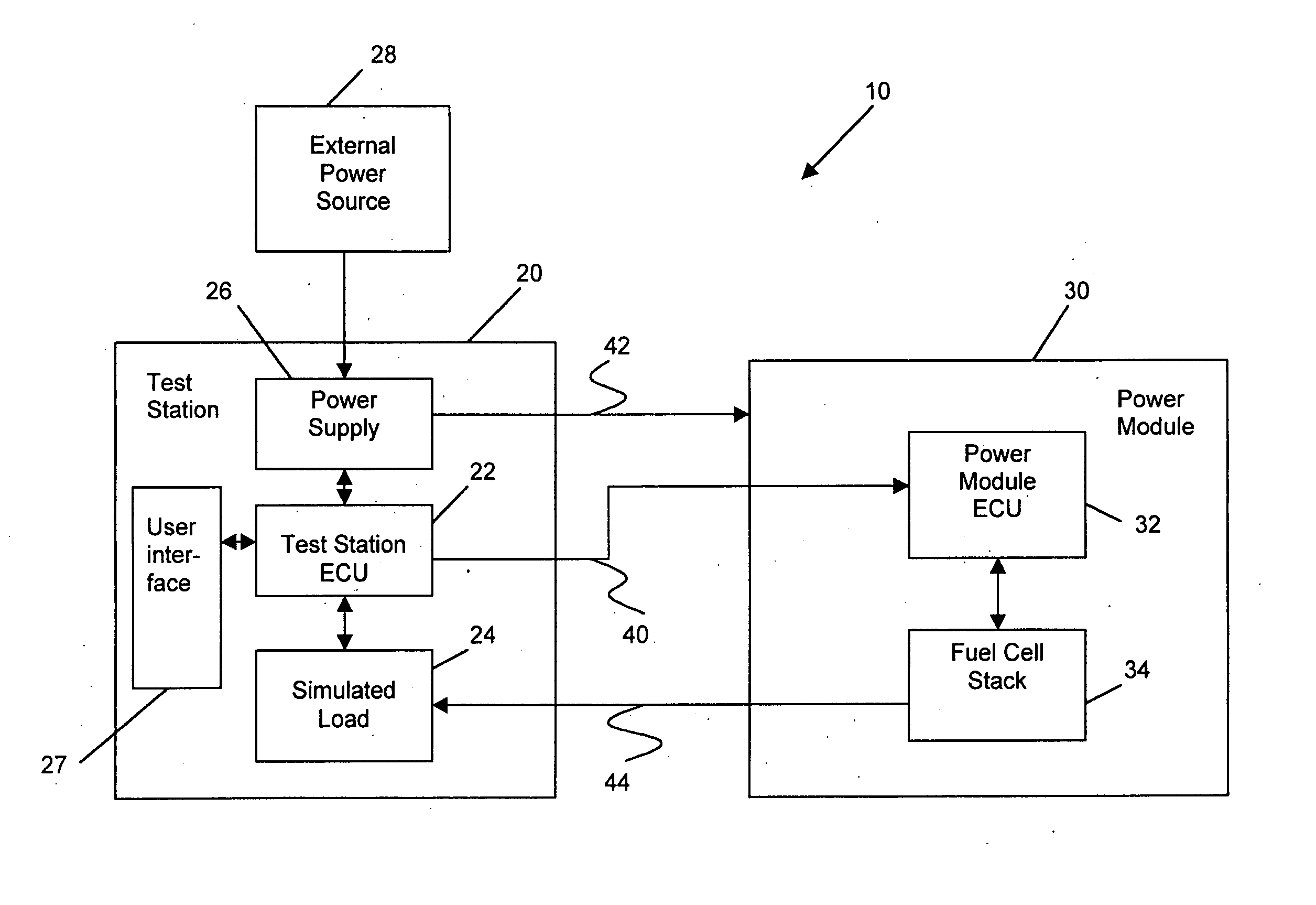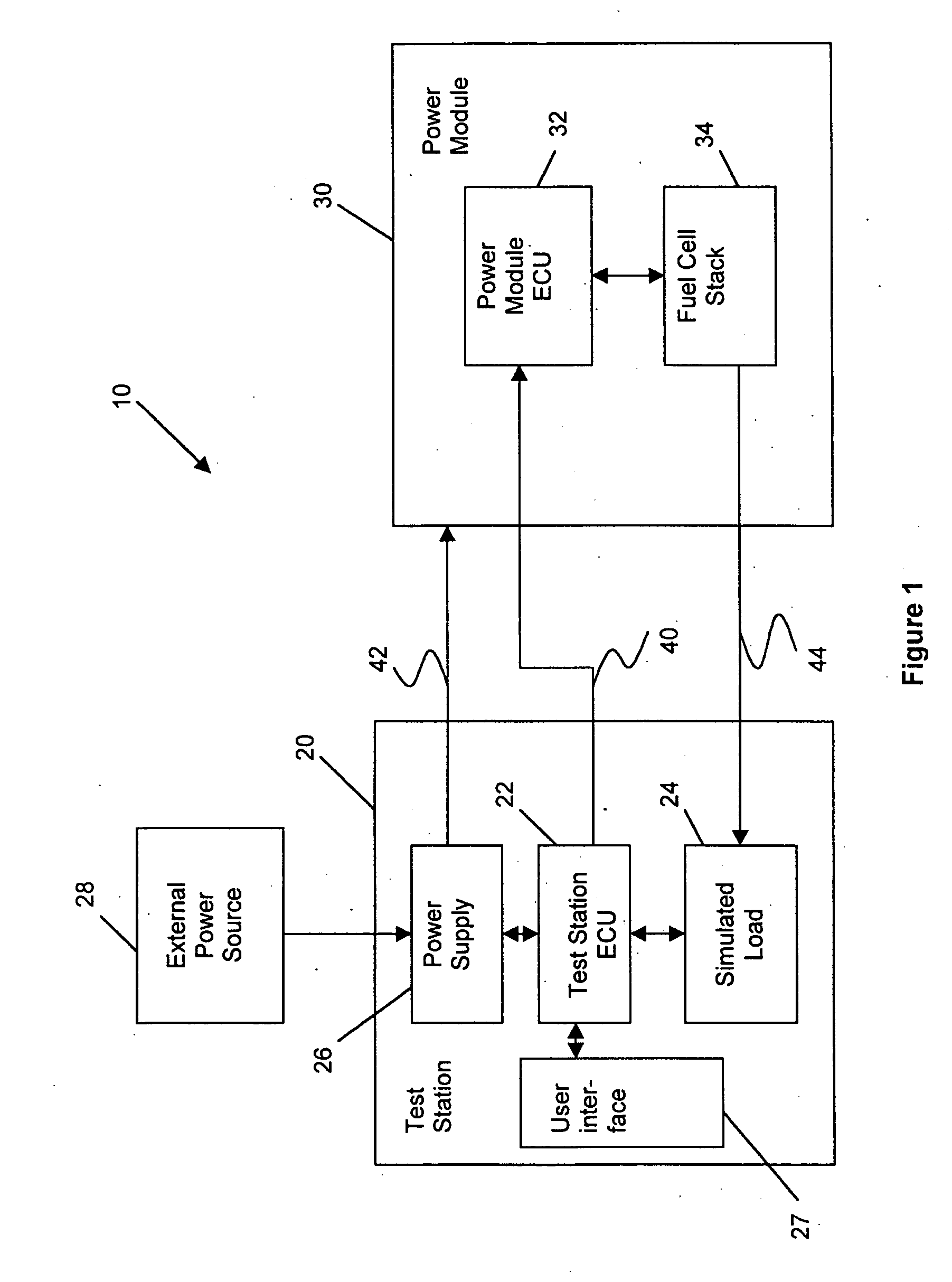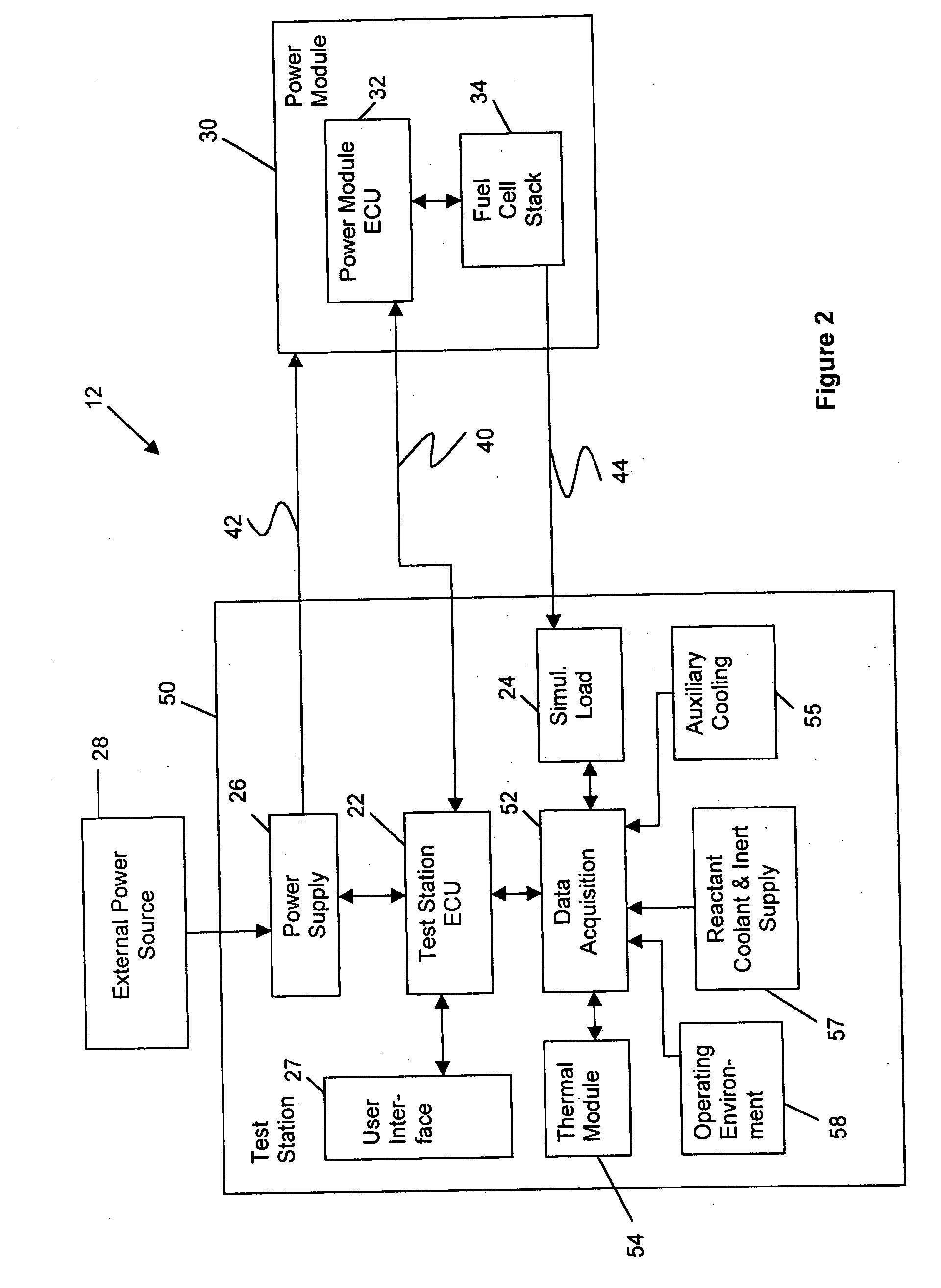Test station for a fuel cell power module
a fuel cell power module and test station technology, applied in cell components, electrochemical generators, instruments, etc., can solve the problem that fuel cell stacks do not have the capability of self-monitoring or regulating
- Summary
- Abstract
- Description
- Claims
- Application Information
AI Technical Summary
Benefits of technology
Problems solved by technology
Method used
Image
Examples
first embodiment
[0032] Referring to FIG. 1, the invention is shown in the form of a test system 10, comprising a test station 20 and a power module 30. An electronic control unit (ECU) 22, which will be referred to herein as the test controller 22, is in communication with an ECU 32 of the power module, which will be referred to herein as the FCPM controller 32. This communication is enabled by a controller area network (CAN) bus 40 interconnecting the test controller 22 and FCPM controller 32 via wiring connectors (not shown) of the respective controllers. The CAN bus conforms generally to the known CAN standard for automotive applications.
[0033] The use of the CAN bus 40 in the preferred embodiments is advantageous because, once the test station 20 has tested the FCPM 30, the FCPM 30 can then be installed in an automotive application where the CAN bus 40 is connected to a vehicle master controller. The CAN bus 40 is a two-wire differential serial bus system, which operates in noisy electrical env...
second embodiment
[0046] Referring now to FIG. 2, the invention is depicted, in the form of test system 12. Test system 12 is similar to test system 10 shown and described in relation to FIG. 1, but has a test station 50 with enhanced functionality relative to previously described test station 20. In the following description of FIG. 2, reference will only be made to those aspects of test station 50 which are different from test station 20 as described above. Thus, for example, for a description of the interaction between the test controller 22 and FCPM controller 32 over CAN bus 40, reference should be made to the corresponding description with respect to FIG. 1 above.
[0047] Test station 50 is a more enhanced and sophisticated version of test station 20 in that it includes a data acquisition module 52 for interfacing with additional monitoring and control modules within test station 50. The primary function of data acquisition module 52 is to receive analog inputs from various sensors associated wit...
PUM
| Property | Measurement | Unit |
|---|---|---|
| voltage | aaaaa | aaaaa |
| voltage | aaaaa | aaaaa |
| voltage | aaaaa | aaaaa |
Abstract
Description
Claims
Application Information
 Login to View More
Login to View More - R&D
- Intellectual Property
- Life Sciences
- Materials
- Tech Scout
- Unparalleled Data Quality
- Higher Quality Content
- 60% Fewer Hallucinations
Browse by: Latest US Patents, China's latest patents, Technical Efficacy Thesaurus, Application Domain, Technology Topic, Popular Technical Reports.
© 2025 PatSnap. All rights reserved.Legal|Privacy policy|Modern Slavery Act Transparency Statement|Sitemap|About US| Contact US: help@patsnap.com



